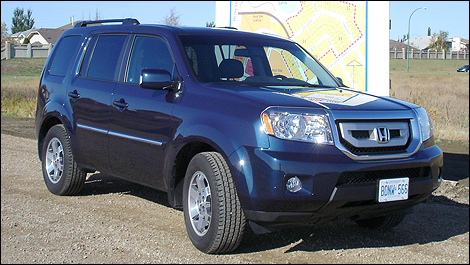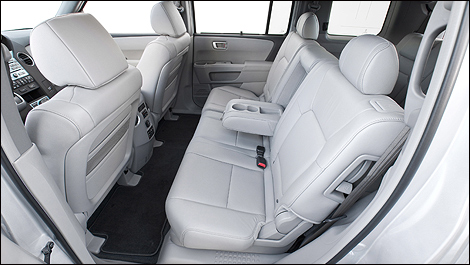
When Maruti introduced the Suzuki Swift into its ageing model range, it came as a breath of fresh air and forever changed the face of Suzuki (née Maruti). Until then, Maruti had a reputation for producing highly dependable but dull and boring cars. The Swift was proof that Suzuki can now make cars that are sexy, well built and desirable. It won several awards (including our Car of the Year gong for 2006) and became an instant hit. The Swift was always going to be a tough act to follow and even the SX4, which is designed and built much in the same mould, hasn’t quite dominated its class the way the Swift has and the A-star too is trying to walk like the Swift.
But now the Swift could be outdone by the Ritz, a funky new hatchback that follows the same European design theme which is now a key element of Suzuki’s future products. Built on the same platform as the Swift, the Ritz has all the well-established ingredients of its cousin but comes with an added dose of practicality and a brand-new petrol engine.
Suzuki describes the Ritz as a mini-MPV but we’d rather look at it as a spacious hatchback that’s aimed at families rather than the young couples and singles that the Swift appeals to. Unlike the Swift’s distinctly two-box styling, the Ritz leans towards a monospace shape, the idea being to liberate as much internal room as possible.
While the Swift’s styling is intended to make a statement, the Ritz’s smooth and simple lines, though nowhere near as dramatic, look every bit as modern. The large lights and rounded nose with the now-de rigueur raised bonnet (to meet mandatory pedestrian safety regulations) stand out but manage to blend well with the rest of the body. With its 1590mm height, the Ritz is pretty tall but the large wheels (on 15-inch alloys) bulge out of their arches to give it a planted look. The rising waistline eats into the window area at the rear before meeting the ‘inverse’ C-pillar. The rear with its pillar-mounted tail-lights looks quite striking and the inward sloping tailgate ensures it doesn’t look boxy from the rear.
A car’s wheelbase often reflects the amount of internal space available but for the Ritz, which has a 30mm shorter wheelbase than the Swift, the reverse is true thanks to its taller proportions. Compared to the Swift’s dark and dingy cabin, the Ritz’s interiors feel airy and cheerful. The Ritz’s tall and wide door apertures make access to the seats easy and the high seating position and roofline make it significantly more comfortable than the Swift. As a result, it’s a better five-seater. Also, the larger rear windows don’t give you the same cooped-up feeling you get in the Swift. Luggage space unfortunately isn’t great and the small 178-litre boot can only accommodate a couple of small, soft bags.
Interior quality feels a notch better than the Swift and the Ritz gets its own dashboard, which is superbly finished and has a distinctive design. The large, white speedometer with all the warning lights arranged in a ring around it truly stands out; another unique touch is the rev counter which sits in its own housing on top of the dashboard a’la the A-Star.
The centre console looks extremely neat with an integrated audio system. The gear lever has been moved into the console as well. While the Ritz’s interiors are quite different from the Swift and more practical with lots more storage space, you can’t help but notice the similarities. The steering wheel, gear lever and window switches have all come from the same parts bin. In fact, Suzuki has taken its parts sharing policy to an extreme using the same steering wheel for the Swift, SX4, Grand Vitara and now the Ritz.
What truly sets the Ritz apart from the Swift is the brand-new 1.2-litre K-series engine (see ‘The K-Factor’ box). This motor feels far more refined than the Swift’s buzzy 1.3-litre G-series motor and, despite a smaller cubic capacity, offers similar performance. It’s noticeably quieter at idle and feels smooth throughout the rev range. There’s adequate grunt for city driving but the concentration of power is in the upper reaches of its power band. For serious overtaking manoeuvres, you need to spin the engine beyond 4000rpm but that’s not a reason to complain as this engine loves to be revved. It gets a bit vocal near the redline but there’s none of the underlying harshness of the Swift’s or even SX4’s motors.
The gearshift is snappy and direct and the gear ratios particularly well chosen. The Ritz is heavier than the Swift and that does blunt its performance but underpowered is not a term we would use for it. The Ritz will also come with a diesel option — the same 1.3 Multi-jet diesel that powers the Swift. Again, the slightly heavier Ritz may not feel as lively but a typical diesel car buyer is unlikely to complain.
Though the Ritz is based on the Swift, the driving characteristics of the two are quite different. The Ritz’s electric steering feels more direct and is a huge improvement over the inconsistent feel of the Swift’s helm we have often complained about.
The grip from the 185/60 R-15 tyres gives a surprising amount of ability through corners but the higher stance means that there is a significant amount of body roll, more than the Swift. As a result, you can’t chuck it into corners with the same abandon and the Swift, despite its iffy steering, has a more secure feel through corners. For the Indian market, Maruti will recalibrate the suspension to suit Indian roads. But whatever tweaks are done, it will be hard to completely eliminate the choppy ride which stems from the short wheelbase.
The Ritz is going to hit the roads soon and it will be positioned as a more practical alternative to the Swift. Die-hard Swift fans who love the car’s sporty feel and styling may not migrate to what is clearly a more mainstream hatchback. However, the Ritz is a better family car and it’s better built too. The tighter panel gaps imply that it hopefully won’t be as rattle-prone as the Swift.
*We tested the Splash in the UK (as the Ritz is called there), where it is marginally more expensive than the Swift. However, in India that could be offset by the Ritz’s 1.2 engine which gets tax benefits as it meets the criteria for a ‘small car. The Ritz may end up costing the same or slightly more than the Swift in India and it remains to be seen how the Ritz will square up to its super-successful cousin. No doubt, the Ritz’s fresh appeal will carve a significant chunk out of Swift sales but together, they could end up dominating the premium hatchback market, which is exactly what Maruti wants to do.
FACTFILE
Maruti-Suzuki Ritz
Price Rs 4-5 lakh (est)
L/W/H 3730/1680/1590mm
Wheelbase 2360mm
Kerb weight 1165kg
Engine 4 cyls inline, 1197cc, petrol
Power 84bhp at 6000rpm
Torque 11.4kgm at 4500rpm
















